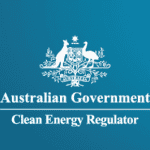Around The Web
Professor Stephen Hawking memorial plans 'no further forward'
Grattan on Friday: The Coalition is trapped in its coal minefield
US official reveals Atlantic oil plan while hailing Trump distractions
Revealed: Interior department official says he is ‘thrilled’ by Trump’s ‘knack for keeping the attention of the media and public focused somewhere else’
A top US official told a group of fossil fuel industry leaders that the Trump administration will soon issue a proposal making large portions of the Atlantic available for oil and gas development, and said that it is easier to work on such priorities because Donald Trump is skilled at sowing “absolutely thrilling” distractions, according to records of a meeting obtained by the Guardian.
Joe Balash, the assistant secretary for land and minerals management, was speaking to companies in the oil exploration business at a meeting of the International Association of Geophysical Contractors, or IAGC, last month.
Continue reading...Emma Haruka Iwao smashes pi world record with Google help
'This is an emergency': Australia's student climate strikes and where you can find them
Strikes are planned at 60 locations in Australia, including every state and territory capital
Tens of thousands of Australian school students are expected to walk out of class on Friday to demand governments take action on climate change.
The Australian strikes are part of a global campaign by students for greater urgency from politicians in tackling what they see as the greatest threat to their future.
Continue reading...'We can’t afford to stand by and do nothing’: 10 everyday heroes fighting to save the planet
Schoolchildren around the world are joining a global strike against climate change this week. But they’re not the only everyday people inspired to take action. We talk to 10 UK activists on the frontline of our most serious environmental issues.
Extinction Rebellion is an environmental direct action group
Continue reading...Safeguard Mechanism offset use drops 42% despite rising emissions
Australia's annual carbon emissions reach record high
Data shows while emissions from electricity sector are in decline, gains have been wiped out by increases from other industries
Australia’s annual carbon emissions have reached a new high and drops in emissions from the electricity sector have been wiped out by increases from other industries, according to new data.
Ndevr Environmental, an emissions-tracking organisation that releases quarterly greenhouse gas emissions data, said on Thursday that annual emissions for the year up to December 2018 increased to 558.4m tonnes of carbon dioxide equivalent. It was the highest level on record when excluding unreliable land use data.
Continue reading...New trial launched to empower mini-power plants
 Endeavour Energy has joined an innovative trial of new ways to monitor and control its network to keep downward pressure on electricity prices and smooth the transition to a cleaner energy future.
Endeavour Energy has joined an innovative trial of new ways to monitor and control its network to keep downward pressure on electricity prices and smooth the transition to a cleaner energy future.
The post New trial launched to empower mini-power plants appeared first on RenewEconomy.
Who should hold “hot potato” of connection costs for wind and solar farms?
 Developers and contractors want more clarity, and fewer last minute changes, to connections for wind and solar projects.
Developers and contractors want more clarity, and fewer last minute changes, to connections for wind and solar projects.
The post Who should hold “hot potato” of connection costs for wind and solar farms? appeared first on RenewEconomy.
Ignoring carbon “a luxury” says Macquarie, as fallout continues over WA EPA guidelines
 Federal resources minister upgrades W.A. EPA carbon guidelines from "homemade sledgehammer" to “brain explosion.” Macquarie analyst says it's a "solid compromise" for LNG companies.
Federal resources minister upgrades W.A. EPA carbon guidelines from "homemade sledgehammer" to “brain explosion.” Macquarie analyst says it's a "solid compromise" for LNG companies.
The post Ignoring carbon “a luxury” says Macquarie, as fallout continues over WA EPA guidelines appeared first on RenewEconomy.
Issuance of the first Australian carbon credit units to a soil carbon project
 The Clean Energy Regulator has today issued the first Australian carbon credit units (ACCUs) to a soil carbon project under the Emissions Reduction Fund.
The Clean Energy Regulator has today issued the first Australian carbon credit units (ACCUs) to a soil carbon project under the Emissions Reduction Fund.
The post Issuance of the first Australian carbon credit units to a soil carbon project appeared first on RenewEconomy.
Energy Insiders Podcast: Why pulling down poles and wires is a good idea
 Horizon Power’s Mark Paterson explains why replacing poles and wires with solar and batteries is a great idea.
Horizon Power’s Mark Paterson explains why replacing poles and wires with solar and batteries is a great idea.
The post Energy Insiders Podcast: Why pulling down poles and wires is a good idea appeared first on RenewEconomy.
Major NZ emitters set up joint firm to build carbon portfolio
New Mexico joins list of American states targeting 100% zero carbon
 New Mexico approves bill which would see the state secure 100% of its electricity from zero-carbon resources by 2045, joining a host of other US states.
New Mexico approves bill which would see the state secure 100% of its electricity from zero-carbon resources by 2045, joining a host of other US states.
The post New Mexico joins list of American states targeting 100% zero carbon appeared first on RenewEconomy.
Shell’s big power plans point to rapid shift to electric, and scale of disruption
 Shell intends to be biggest power company in the world in little more than a decade, as everything goes electric, including transport and heating, and electricity goes green.
Shell intends to be biggest power company in the world in little more than a decade, as everything goes electric, including transport and heating, and electricity goes green.
The post Shell’s big power plans point to rapid shift to electric, and scale of disruption appeared first on RenewEconomy.
A warning for wine-lovers: climate change is messing with your favourite tipple's timing
Environment groups accuse government of 'denying the facts' on land clearing
Environment department ‘cherry picked’ data to claim clearing has decreased, but figures show recent steady increase
Two of Australia’s largest environment groups have accused the federal environment department of providing inaccurate information about land clearing to the Senate, and of not acting to reduce habitat loss.
The Australian Conservation Foundation and WWF Australia say the department has “cherry picked” data to claim that land clearing in Queensland has decreased, when national figures on land clearing rates in that state in fact show increases since 2011.
Continue reading...


